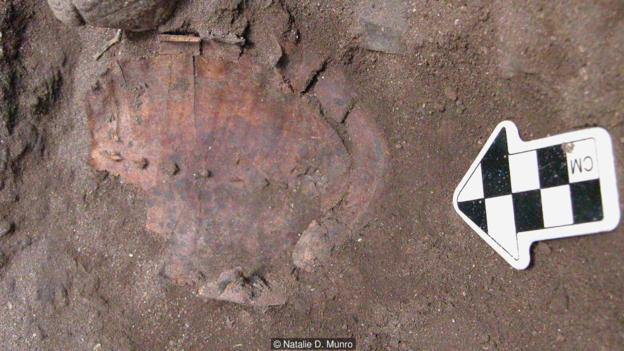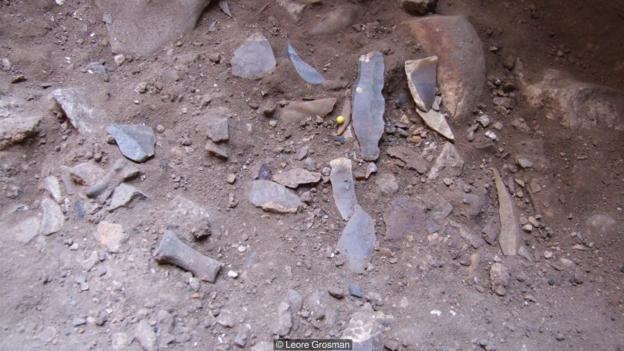How Stone Age people buried their dead
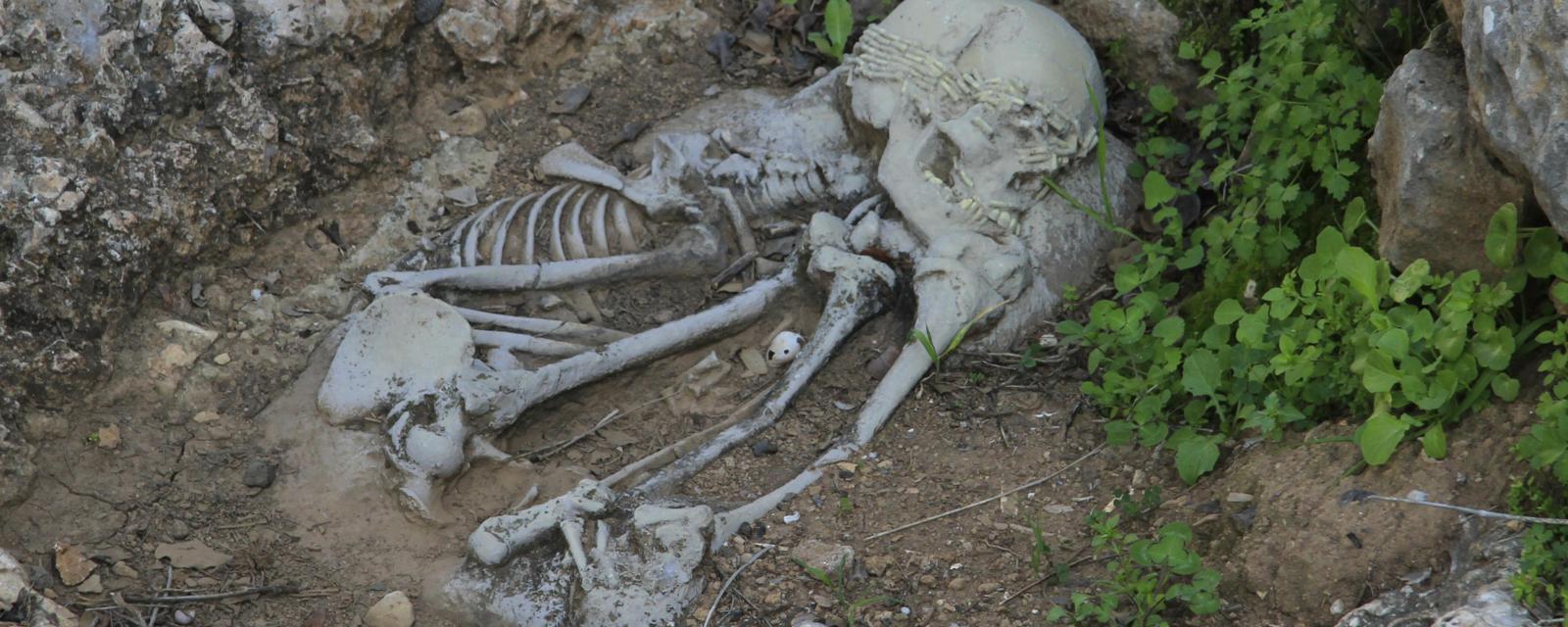
F0J7T2 Mount Carmel, a copy of a Natufian burial in Nahal Mearot, a World Heritage Site for human evolution
A 12,000-year-old grave in Israel is unlocking more secrets of one of the most extensive and earliest funeral feasts on record
About 12,000 years ago, a great feast was held in honour of a mysterious woman. The group filled her grave with strange objects. Then, bizarrely, they threw the remains of their meal into the grave.
The remains of the feast were discovered in Hilazon Tachtit cave in Israel, where other human remains have previously been found.
Archaeologists have been poring over the remains from this fateful day ever since they were discovered.
They have now managed to reconstruct the exact sequence of events at the funeral. Their findings are published in the journal Current Anthropology.
The group belonged to the Natufian culture, who lived in the Levant from about 15,000 to 11,500 years ago.
This is the first time burials were the order of the day
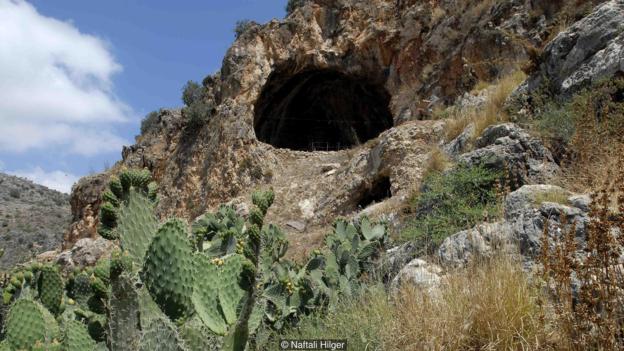
HILAZON excavation site
July 2006
They lived in groups and had settled down, before the dawn of farming. This was unusual: most other humans at this time lived in bands of hunter-gatherers who moved from place to place.
The Natufians were among the first groups to carry out organised burial rituals.
"This is the first time burials were the order of the day at that time. Maybe it's because we are seeing [greater] complexity in society," says Leore Grosman of the Hebrew University of Jerusalem in Israel, who has been analysing the grave for over eight years.
The feast in Hilazon Tachtit was one of the most extensive funeral banquets ever discovered. It is also one of the oldest.
It included an impressive menu. Fish, mountain gazelles, red foxes, pine martens, snakes and hares were among the species uncovered.
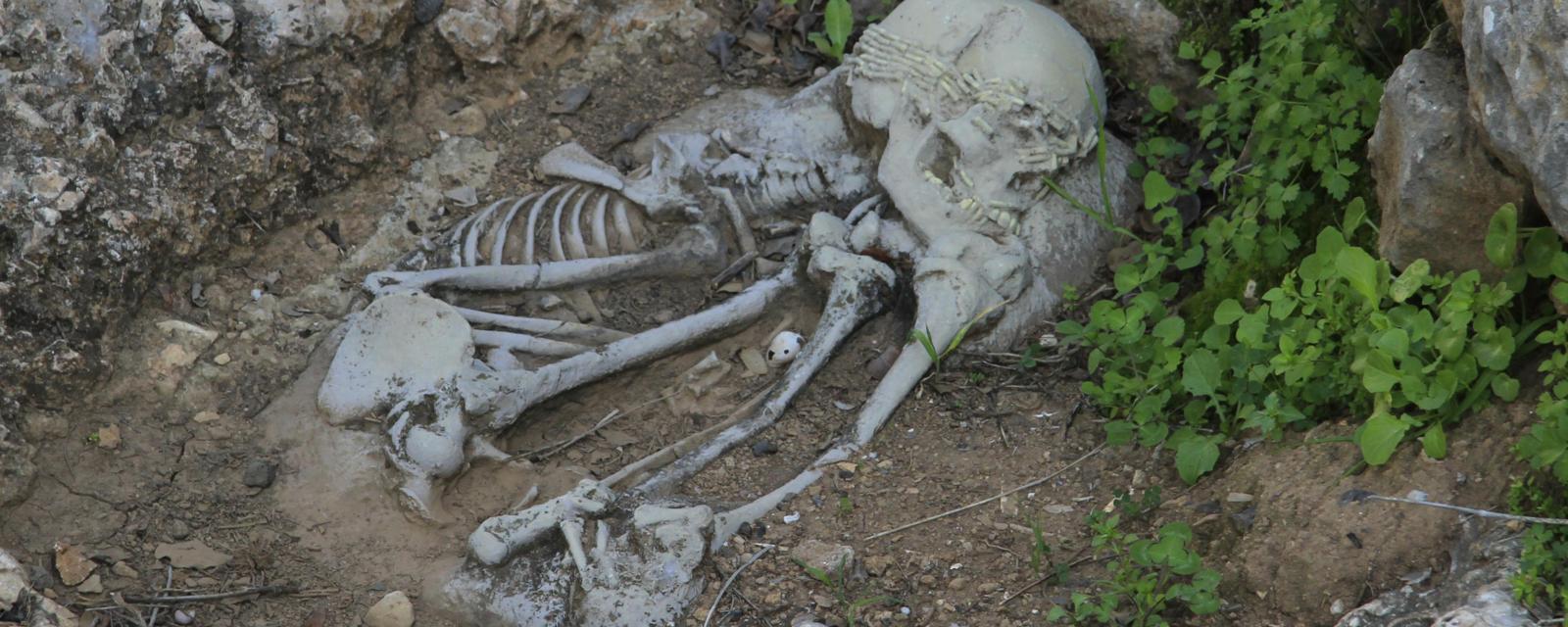
F0J7T2 Mount Carmel, a copy of a Natufian burial in Nahal Mearot, a World Heritage Site for human evolution
The forearm of a wild boar and yet more tortoise carapaces were placed under her head and pelvis
Roast tortoises were evidently a favourite. The remnants of over 80 were found, representing about 44lb (20kg) of meat.
There must have been a lot of people to get through all this food, though just how many is difficult to know.
Grosman and her colleague Natalie Munro of the University of Connecticut in Storrs, US found that the funeral preparations and feast were divided into at least six carefully-planned stages.
First, the Natufians excavated the cave floor so that the grave could be made.
The Natufians sealed the body with a large slab of limestone
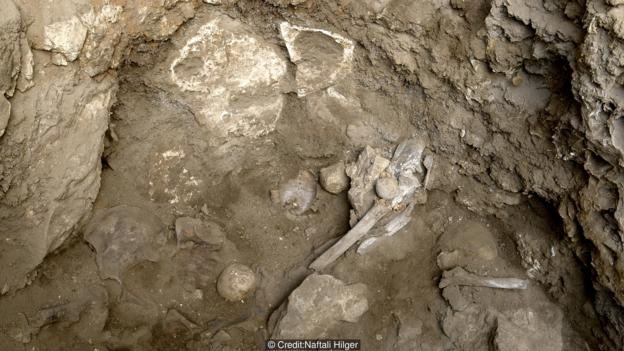
HILAZON excavation site
July 2006
Next, they placed a limestone cache inside the grave and filled it with strange objects. These included a horn from a male gazelle, a chunk of red ochre, three or more tortoise carapaces, and fragments of chalk. They then "dumped" ash sediment onto the cache.
It was only in the fourth stage that the people placed the woman's body inside the grave, in an almost sitting position. The forearm of a wild boar and yet more tortoise carapaces were placed under her head and pelvis.
Many other unusual objects – not seen in other Natufian sites – were then placed around and on top of the body. These included sea shells and a golden eagle's wing tip. The most bizarre inclusion was "an articulated human foot" that belonged to another individual.
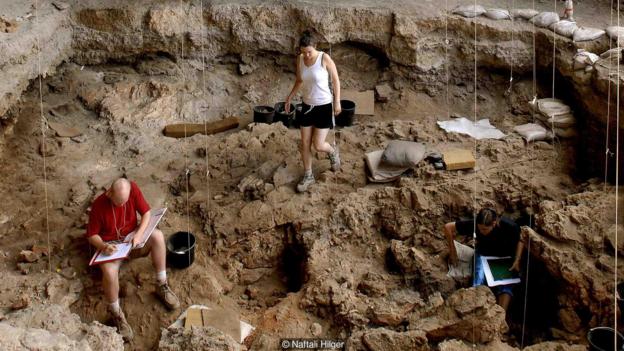
HILAZON excavation site
July 2006
The fifth stage was the feast itself. People threw the remnants of food into the grave before it was sealed.
"They were not afraid to dispose [of] what we call garbage in the grave," says Grosman. "It was almost like they were weighing the body down."
In the sixth and final stage, the Natufians sealed the body with a large slab of limestone that weighed 165lb (75kg). It is the largest block of limestone ever discovered in a Natufian site.
Later Neolithic rituals were rooted, to varying degrees, in earlier Natufian traditions

This funeral feast would have taken a lot of preparation. Gathering and hunting the animals could have taken weeks.
We do not know for sure why this woman received such a special grave, while others nearby had much plainer burials. But her elaborate burial suggests the woman was an important individual.
"She was unique in her society," says Grosman. "The things put around her describe shamanistic activities. So after bringing up all the facets we suggest she was probably a shaman."
Her remains showed evidence of a congenital deformation, suggesting that she had a limp.
This early funeral feast highlights that the Natufian people had developed complex social interactions. Smaller bands of hunter-gatherers could not have come up with such elaborate rituals, because they moved around too often to cement deep relationships with large groups.
People threw the remnants of food into the grave before it was sealed
"The paper makes a persuasive argument for the ritual performances that likely accompanied many if not all Natufian burial acts and gives us valuable insights into the symbolic and ideological world of the site's occupant," writes Lisa Maher of the University of California, Berkeley in a published comment on the new research.
"The question now is whether we can identify similar performances in other burials, at other sites, or in other contexts."
More recent societies evidently took inspiration from their Natufian ancestors. Maher writes that "later Neolithic [Stone Age] rituals were rooted, to varying degrees, in earlier Natufian traditions."
Политика конфиденциальности | Правила пользования сайтом
